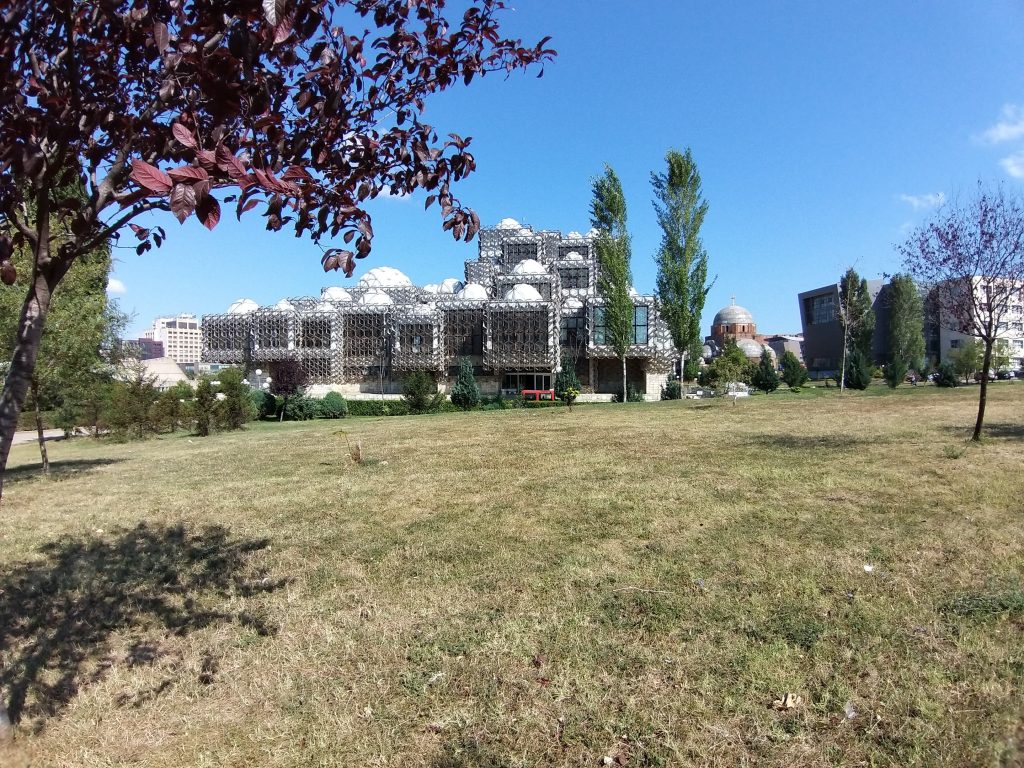Prishtina
Prishtina is the capital city of Kosova. The city may not be the one you fall in love at the first sight because of the mess and the crowd that goes on and on, but its Ottoman heritage competing with communist designs and recently built monstrosities gives Prishtina a unique urban feel. There are many well-hidden secrets. A closer look with an open mind makes Prishtina a good place to explore.
The area in and around Prishtina has been inhabited for nearly 10,000 years. Islam and Christianity are the most widely practiced religions among the people of Prishtina. The city is the center of cultural and artistic development of all Albanians that live in Kosovo. Prishtina is home to the largest cultural institutions of the country. To visit Prishtina you can book with one of our cultural tours where Gracanica is included.
What to visit in Prishtina
The Newborn Monument
This monument was unveiled on February 17th, 2008, which was the date that Kosovo declared independence from Serbia. Obviously, it is symbolic of independence and the birth of a new nation. Therefore the intention is to repaint it every year on the 17th of February.
Cathedral of Saint Mother Teresa
The Cathedral of Saint Mother Teresa is a Roman Catholic cathedral. In 2007, the Government of Kosovo approved plans for the building. The cathedral is dedicated to the Albanian–Indian Roman Catholic nun and missionary, Saint Teresa of Calcutta. The foundation was ceremonially laid by former President of Kosovo, Ibrahim Rugova, himself a Muslim. The cathedral will be one of Pristina’s tallest buildings.

The National Library of Kosovo
The National Library of Kosovo is the highest library institution in Kosovo. This is one of the weirdest looking buildings in Europe. A mix of domes and cubes covered in what looks like chain mail. The mission of the library is to collect, preserve, promote and make accessible the documentary and intellectual heritage of Kosovo.
It holds exhibitions and holds an archive of national newspapers. The library also provides a number of other services. Its unique history, followed by controversies about the outside appearance of it make it even more special.

Germia Park
Germia Park is the green lung of the city and comprises a 15-20 km network of paths great for walking, jogging and biking. There is a huge air-pool, tennis courts and a small arena used for concerts. About 1.5km into the park itself there is a basketball court. The park consists mostly of woods and extends over the wide area.
The Partisan Martyrs Cemetery in Prishtina
Although it’s a fairly easy walk, getting to this monument in Prishtina’s suburbs requires a little bit more effort than the more centrally-located sights. This memorial is dedicated to soldiers and civilians from the Pristina region who lost their lives during WWII (known as the National Liberation War in the Balkans). While the cemetery is also the resting place for victims of more recent conflicts.
The Ethnological Museum of Kosovo
The Ethnological Treasure of Kosovo is this ethnographic museum. Emin Gjikolli once owned the house whose nickname means “little man”, in Turkish “Eminçik”, which the complex holds the name today. In the museum, tools and items related to lifestyle from the Ottoman Kosovo period are on display. In 2002, the Ethnological Museum opened its exhibition of a permanent nature and presented ancient clothing, tools, containers furniture and old weapons, etc.,.